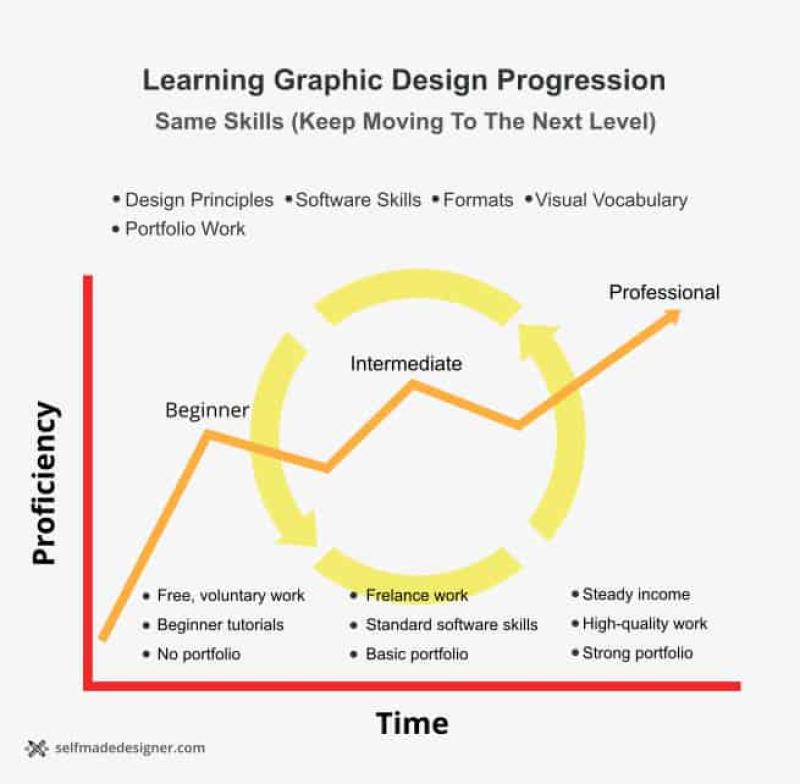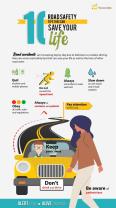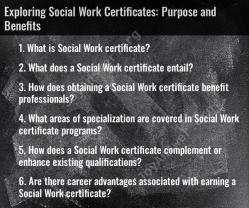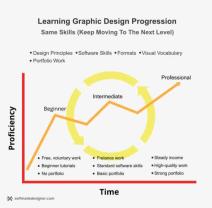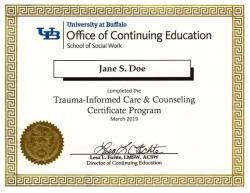How can I learn graphic design?
Learning graphic design involves a combination of education, practice, and exposure to industry tools and trends. Here are some pathways and resources to help you learn graphic design:
1. Educational Pathways:
a. Formal Education:
- Consider enrolling in a graphic design program at a university, college, or art school. Many institutions offer degree programs or certificates in graphic design.
b. Online Courses:
- Platforms like Coursera, Udemy, Skillshare, and LinkedIn Learning offer online courses in graphic design. Look for courses that cover fundamental concepts, software skills, and design principles.
c. Self-paced Learning:
- Explore self-paced learning resources, such as Khan Academy and Codecademy, for introductory lessons in design principles and software tools.
2. Software Proficiency:
a. Adobe Creative Cloud:
- Familiarize yourself with industry-standard software like Adobe Photoshop, Illustrator, and InDesign. Adobe offers tutorials, and other online platforms provide courses specifically for these tools.
b. Alternative Software:
- Explore alternative design tools like GIMP (GNU Image Manipulation Program), CorelDRAW, or Affinity Designer.
3. Online Design Communities:
a. Behance:
- Join Behance to showcase your work, discover others' creations, and connect with professionals in the design community.
b. Dribbble:
- Dribbble is a platform for designers to showcase their portfolios and get feedback. It's a great place to find inspiration and connect with other designers.
4. Books and Reading:
a. Design Books:
- Read design books that cover principles, theory, and case studies. Recommended titles include "The Non-Designer's Design Book" by Robin Williams and "Don't Make Me Think" by Steve Krug.
b. Blogs and Articles:
- Follow design blogs and articles on platforms like Medium and Smashing Magazine for industry insights, tips, and tutorials.
5. Practice and Projects:
a. Personal Projects:
- Undertake personal design projects to build a portfolio. This could include designing logos, creating social media graphics, or working on branding exercises.
b. Design Challenges:
- Participate in design challenges on platforms like Daily Logo Challenge or 30 Days of UI to hone your skills and creativity.
6. Networking and Mentorship:
a. Networking Events:
- Attend local design meetups, conferences, and networking events to connect with professionals in the field.
b. Mentorship Programs:
- Seek mentorship opportunities through platforms like AIGA or mentorship programs offered by design organizations.
7. Feedback and Critique:
a. Online Forums:
- Join online design forums like Reddit's r/design_critiques to receive feedback on your work and learn from others.
b. Portfolio Reviews:
- Have your portfolio reviewed by experienced designers or mentors to get constructive feedback.
8. Keep Up with Trends:
a. Design Magazines and Websites:
- Follow design magazines and websites (e.g., Communication Arts, Awwwards) to stay updated on design trends and innovations.
9. Internships and Freelancing:
a. Internship Opportunities:
- Explore internships to gain real-world experience and exposure to the design industry.
b. Freelancing Platforms:
- Consider freelancing on platforms like Upwork or Fiverr to work on real projects and build your portfolio.
Remember, consistency and continuous learning are key in graphic design. Experiment with different styles, stay curious, and don't be afraid to seek feedback. Building a strong portfolio and gaining practical experience will be crucial as you develop your skills in graphic design.
Pathways to learning graphic design effectively
There are many exciting pathways to learning graphic design effectively, depending on your learning style, budget, and goals. Here are some options to consider:
Formal Education:
- University degree: Earning a Bachelor of Fine Arts in Graphic Design provides a well-rounded foundation in design principles, software, and the professional field. This path typically takes 4 years and can be expensive, but opens doors to established design firms and agencies.
- Associate's degree: Choosing a 2-year Associate of Applied Science in Graphic Design offers a quicker and more affordable option, focusing on practical skills and technical training. This path could lead to freelance work or entry-level positions in smaller agencies.
- Bootcamps: Intensive bootcamps provide fast-paced, immersive learning experiences over weeks or months. They tend to be more expensive than associate degrees but offer focused training in specific design areas and portfolio development, preparing you for freelancing or junior design roles.
Self-Directed Learning:
- Online courses: Numerous online platforms like Skillshare, Coursera, and Udemy offer individual courses or comprehensive curriculums on various graphic design topics. This flexible approach allows you to learn at your own pace and budget, but requires strong self-discipline and organization.
- Books and tutorials: Plenty of excellent books and online tutorials delve into specific design concepts, software skills, and practical guides. This cost-effective method requires active learning and seeking out knowledge independently.
- YouTube channels: Many inspiring and informative YouTube channels feature professional designers sharing their knowledge, tutorials, and industry insights. This free resource can be a great way to learn basic techniques and get exposure to diverse design styles.
Hands-on Practice:
- Personal projects: Take initiative and create personal projects that challenge your skills and explore your interests. This allows you to experiment, build a portfolio, and showcase your unique design voice.
- Freelance work: Start small by taking on freelance gigs on platforms like Upwork or Fiverr. This offers valuable real-world experience, client communication skills, and portfolio building opportunities.
- Design communities: Participate in online or local design communities, forums, and challenges. Sharing your work, receiving feedback, and networking with other designers can be a great way to grow and learn.
Additional Tips:
- Focus on the fundamentals: Prioritize learning core design principles like typography, color theory, composition, and layout before diving into software specifics.
- Master the software: Develop proficiency in industry-standard software like Adobe Photoshop, Illustrator, and InDesign. Practice applying your design knowledge through software.
- Stay inspired: Surround yourself with inspiring design work, follow talented designers, and visit museums and galleries to keep your creative juices flowing.
- Develop your creative voice: Experiment with different styles, explore diverse design projects, and discover your unique design perspective.
- Be persistent and motivated: Learning graphic design takes time, effort, and dedication. Embrace the journey, celebrate your progress, and keep pushing yourself to grow.
Remember, the "best" pathway depends on your specific needs and resources. Combine different approaches, be open to continuous learning, and most importantly, have fun with the creative process!
I hope this helps you choose the path that will lead you to graphic design success! Feel free to ask if you have any further questions about specific learning resources, design software, or building your design portfolio.
